Let's talk Bullmastiffs
Noble and steadfast, the Bullmastiff is an imposing dog who makes an impression on everyone they meet. Their powerful appearance is deceiving, as, although definitely strong, the breed is famed for their gentle manner. Okay, and the drool, too. But the Bullmastiff’s roots as a watchdog also make them a hugely devoted companion, so much so that the Bullmastiff does not treasure their alone time. As the name suggests, the breed came about as a cross between the Old English Bulldog and the Mastiff.
Official name: Bullmastiff
Origins: United Kingdom
Bullmastiff Dog Food
Drooling tendencies
5 out of 5Shedding Level
2 out of 5Energy level*
5 out of 5Compatibility with other pets
2 out of 5Warm weather?
2 out of 5Suited to apartment living
1 out of 5Family pet?*
4 out of 5Can stay alone
1 out of 5
| Male | Female |
|---|---|
| Height | Height |
| 64 - 69 cm | 61 - 66 cm |
| Weight | Weight |
| 49 - 59 kg | 41 - 50 kg |
| Life Stage | |
|---|---|
| Adult | |
| 8 months to 2 years | |
| Mature | Senior |
| 2 to 5 years | From 5 years |
| Baby | |
| Birth to 2 months | |
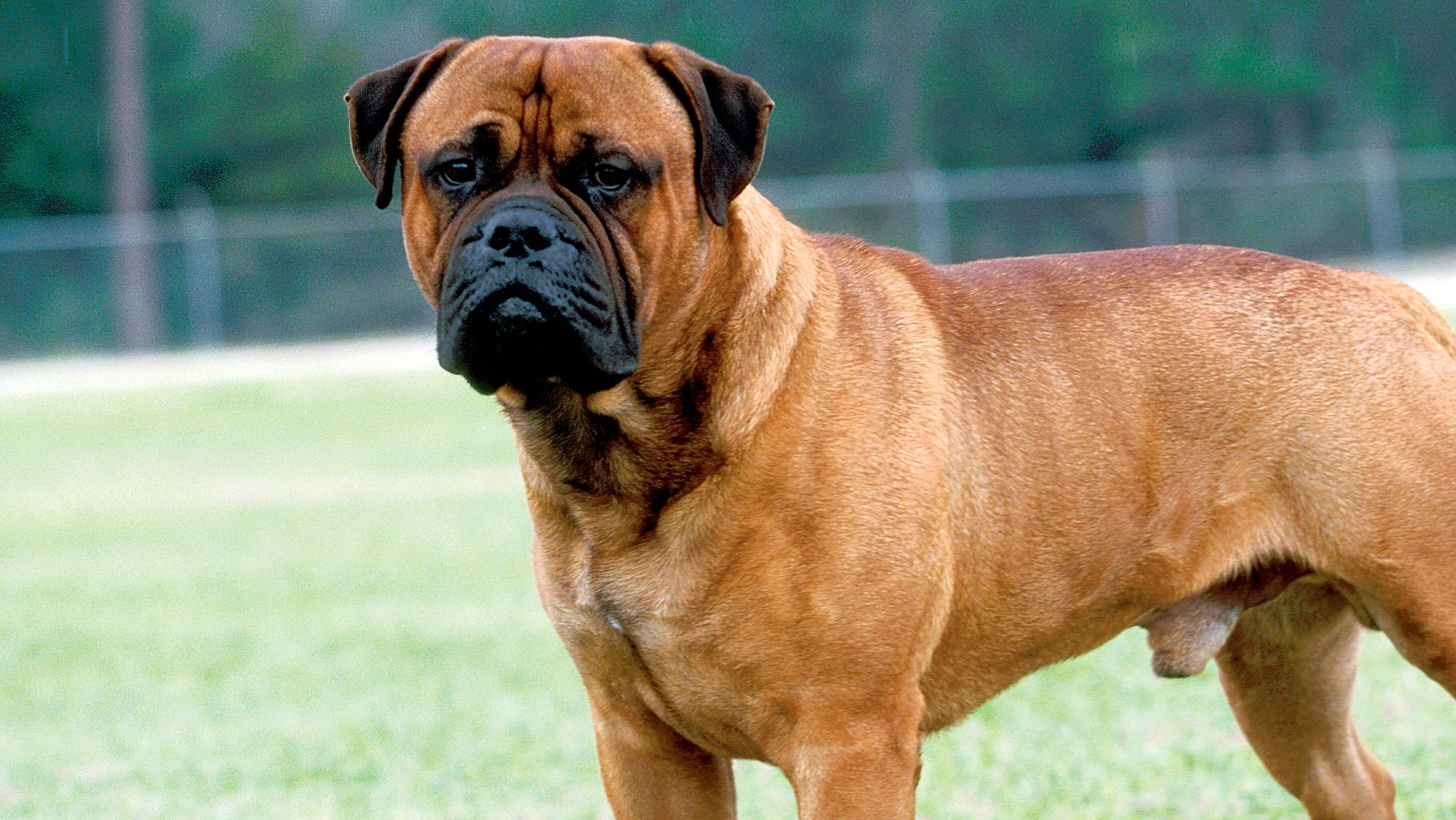
Get to know the Bullmastiff
All you need to know about the breed
The Bullmastiff is an unmistakable breed of dog: Large, confident, and content, call it good breeding or an act of nature but this is a dog that takes it all in stride. The Bullmastif is a beloved family pet who has a strapping presence. At an average of 120 pounds (55kg) and equipped with a massive and muscular body, the breed is equal parts guarder and adorer. Originating in mid-19th-century England, the dog was developed on the great estates in the countryside, their strong and courageous abilities well-suited to guarding game land against poachers. They are, as one might assume, a cross between the Bulldog and the Mastiff.
The Bullmastiff breed quickly earned a reputation for being large and in charge but also as an affectionate and docile dog, one that remains cherished by families today. Those with small children however should take care as a bulky breed like this could mistakenly send them for a tumble. As a resident canine, the breed must be well-socialised from the start. They are known to be dependable and warmhearted but a dog as large as the Bullmastiff needs firm discipline in order to develop correctly.
Graced with a compact physicality, the Bullmastiff is healthy but needs to be kept so. As part of the brachycephalic family, they possess a shortened nose and snout, thus are prone to respiratory problems. Their heavy skeletal system is the … ahem ... biggest factor to keep in mind, as the support system for their substantial musculature. Obesity should be avoided as it increases the workload on joints. Make sure to feed them sound nutrition for a long and vibrant life. They’ll return the gesture with equal parts protection and devotion.
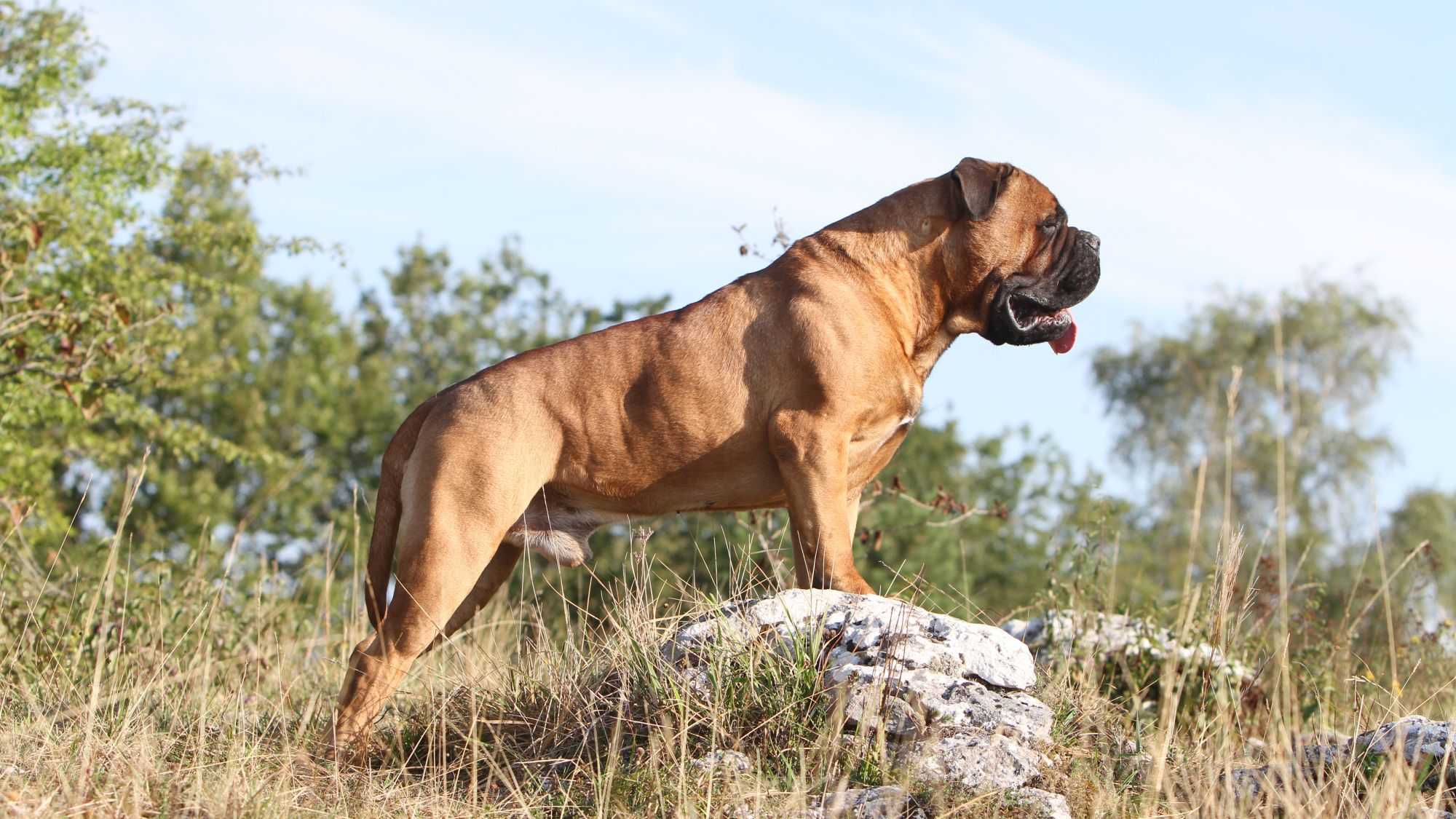
2 facts about Bullmastiffs
1. A pinner not a biter
A dog like the Bullmastiff could easily tackle any intruder, with their enormous strength and unyielding courage. They were bred to guard game land on English countryside estates against poachers, but instead of chomping the intruder, they were trained to pin them to the ground … a novel idea and perhaps a less damaging one in the long run.
2. Not the longest lifespan
Although it’s a difficult topic of conversation, the Bullmastiff’s lifespan — an estimated 7 to 9 years — is something that needs to be thought through for new owners. As a large breed, this is the state of play when it comes to their genetic makeup. Keep your Bullmastiff as healthy as possible – your vet can help! – for a robust life all around.
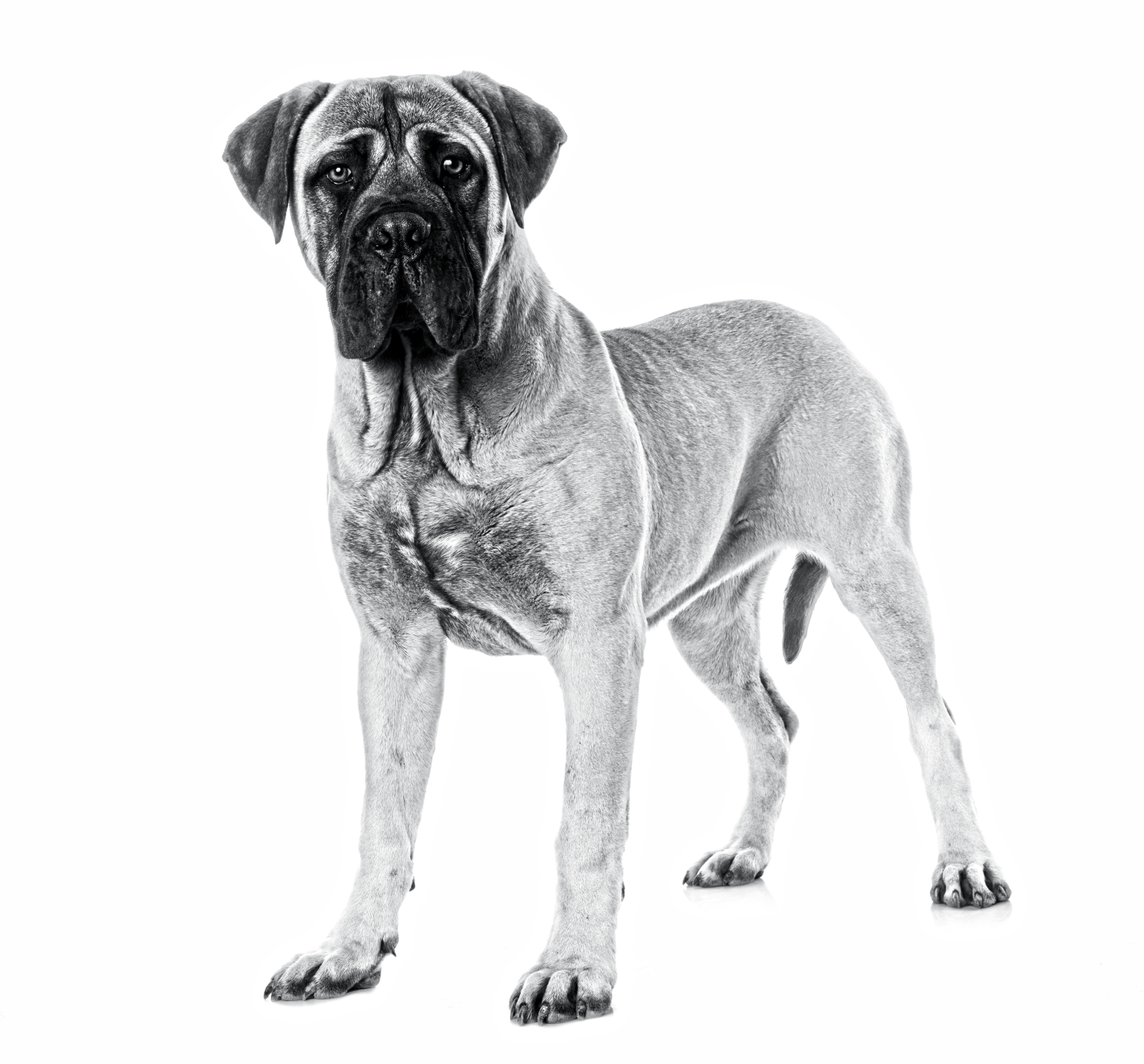
History of the breed
The mastiff-type dog has existed for millenia, marked by large limbs and a sturdy body flowing with muscles. The Bullmastiff was developed most vigorously in England around the year 1860 and, as the name suggests, was a cross between the Bulldog and the Mastiff (40% to 60%), the latter of which outsizes their progeny. Initially called the Gamekeeper’s Night Dog, they were utilised on grand country estates to guard game land against poachers—pinning them against the ground instead of doing away with them.
The Bullmastiff breed has been on a steady upward trajectory ever since, quickly earning a reputation for being affectionate and docile. They were officially recognised by The Kennel Club of England, in 1924, with the American Kennel Club following in 1933.
From head to tail
Physical characteristics of Bullmastiffs
1.Ears
2.Head
3.Body
4.Tail
5.Coat
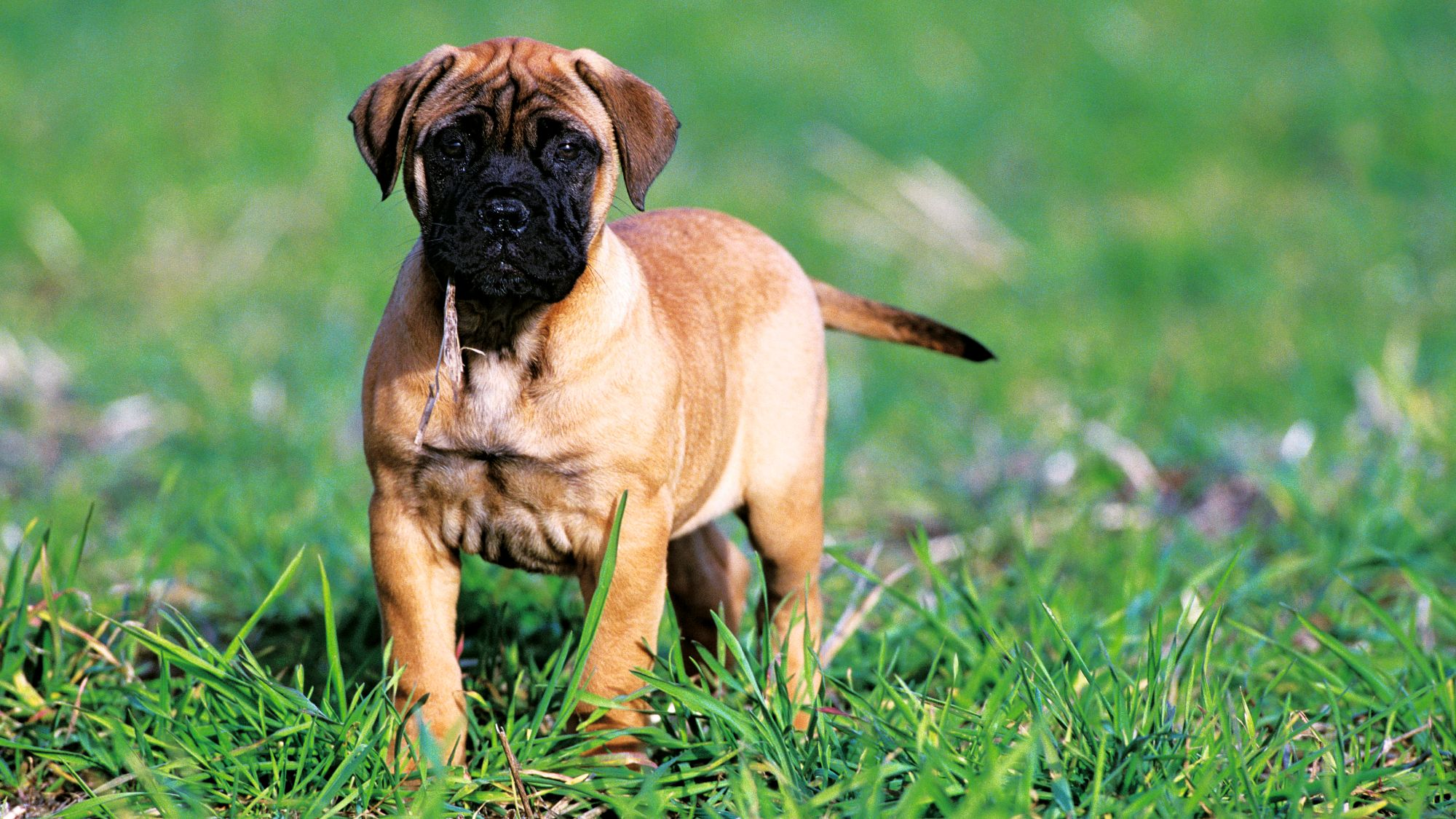
Things to look out for
From specific breed traits to a general health overview, here are some interesting facts about your Bullmastiff
That cute face could pose problems
The Bullmastiff has one charming muzzle, but their physicality has drawbacks: They are a brachycephalic breed – one with a flattened snout and nostrils – which can cause respiratory problems if the conditions aren’t optimum as well as runny eyes and a gaping eyelid. Protect your Bullmastiff from extreme temps, hot or cold, and maintain proper ventilation or air conditioning where necessary. Anaesthesia during surgery can be worrisome as the shortened snout can make oxygen flow difficult. Monitor your dog for breathing troubles or blockages. Make sure to always adopt from a responsible breeder and to seek proper counsel from your veterinarian.
At times twisty insides
Large breeds like the Bullmastiff can have a condition called gastric dilatation and volvulus – GDV – most commonly called bloat. The condition, often abrupt, can happen after a too-quick meal where the stomach turns and fills with gas. Seek medical attention right away if it does occur as it is treatable but can be fatal. Any swelling, restlessness, or sudden discomfort are signs of GDV. Regular vet visits and careful feeding are the best preventative as well as having quiet time two hours before and two hours after meals.
Healthy diet, healthier dog

When choosing food for a Bullmastiff, there are many factors to consider: Their age, lifestyle, activity level, physical condition, and health including potential sickness or sensitivities. Food provides energy to cover a dog’s vital functions, and a complete nutritional formula should contain an adjusted balance of nutrients to avoid any deficiency or excess in their diet, both of which could have adverse effects on the dog. As giant-sized breed dogs have a higher risk of a condition called gastric dilatation volvulus (GDV), where the stomach becomes overstretched and rotated because of excess gas, usually caused by overfeeding during a meal, it’s recommended to split the daily allowance into three meals for puppies and try to keep this routine into their adult years.
Clean and fresh water should be available at all times to support good urinary regularity. In hot weather and especially when out exercising, bring water along for your dog’s frequent water breaks. Energy intake may also have to be adapted to the climatic conditions. A dog that lives outdoors in winter will have increased energy requirements.
The following recommendations are for healthy animals. If your dog has health problems, please consult your veterinarian, who will prescribe an exclusively veterinary diet.
A Bullmastiff puppy’s requirements, in terms of energy, protein, minerals, and vitamins, are greater than those of an adult dog. They need energy and nutrients to maintain their body, but also to grow and build it. During their growth, a Bullmastiff puppy’s immune system develops gradually. A complex of antioxidants – including vitamin E – can help support their natural defences during this time of big changes, discoveries, and new encounters. Their digestive functions are different from an adult Bullmastiff, too: Their digestive system is not mature yet so it is important to provide highly-digestible proteins that will be effectively used for the building of bones, tissues, and organs. Prebiotics, such as fructo-oligosaccharides, can support digestive health by helping balance the intestinal flora, resulting in good stool.
Giant-sized puppies, whose growth period is long and intense, are especially susceptible to skeletal and joint problems, including limb defects, bone deformities, and joint lesions.
The first part of growth (up to 8 months) is mainly concerned with bone development, although the muscles also start to grow. This means that a puppy that eats too much (takes in too much energy) will put on too much weight and grow too quickly. A food with an adjusted calorie content to support a high growth rate while at the same time avoiding excess weight gain will help minimise these risks. A balance of energy and minerals (calcium and phosphorus) during this first phase of growth will contribute to bone mineralisation in order to support bone consolidation and the development of healthy joints. Although the calcium content in the food needs to be increased, giant-sized breed puppies are more sensitive to excessive calcium intake. It’s important to understand that adding any ingredients to a complete food formulated for the growth phase is at best unnecessary and at worst dangerous for the animal, unless prescribed by a veterinarian.

As with many giant-sized breed dogs, Bullmastiffs are prone to digestive sensitivity, and their body weight can create stress on their joints throughout their lifetime. Bullmastiffs’ nutritional needs then should include high-quality protein and a balanced supply of dietary fibre to help promote optimal digestibility, as well as glucosamine, chondroitin, and antioxidants to help support the health of their bones and joints. A formula enriched with omega-3 fatty acids, such as EPA and DHA, will help maintain healthy skin. An adapted taurine content is also important to support healthy heart function.
It is important to avoid feeding Bullmastiffs human foods or fatty snacks. Instead, reward them with kibble taken from their daily meal allowance, and strictly follow the feeding guidelines written on the package.
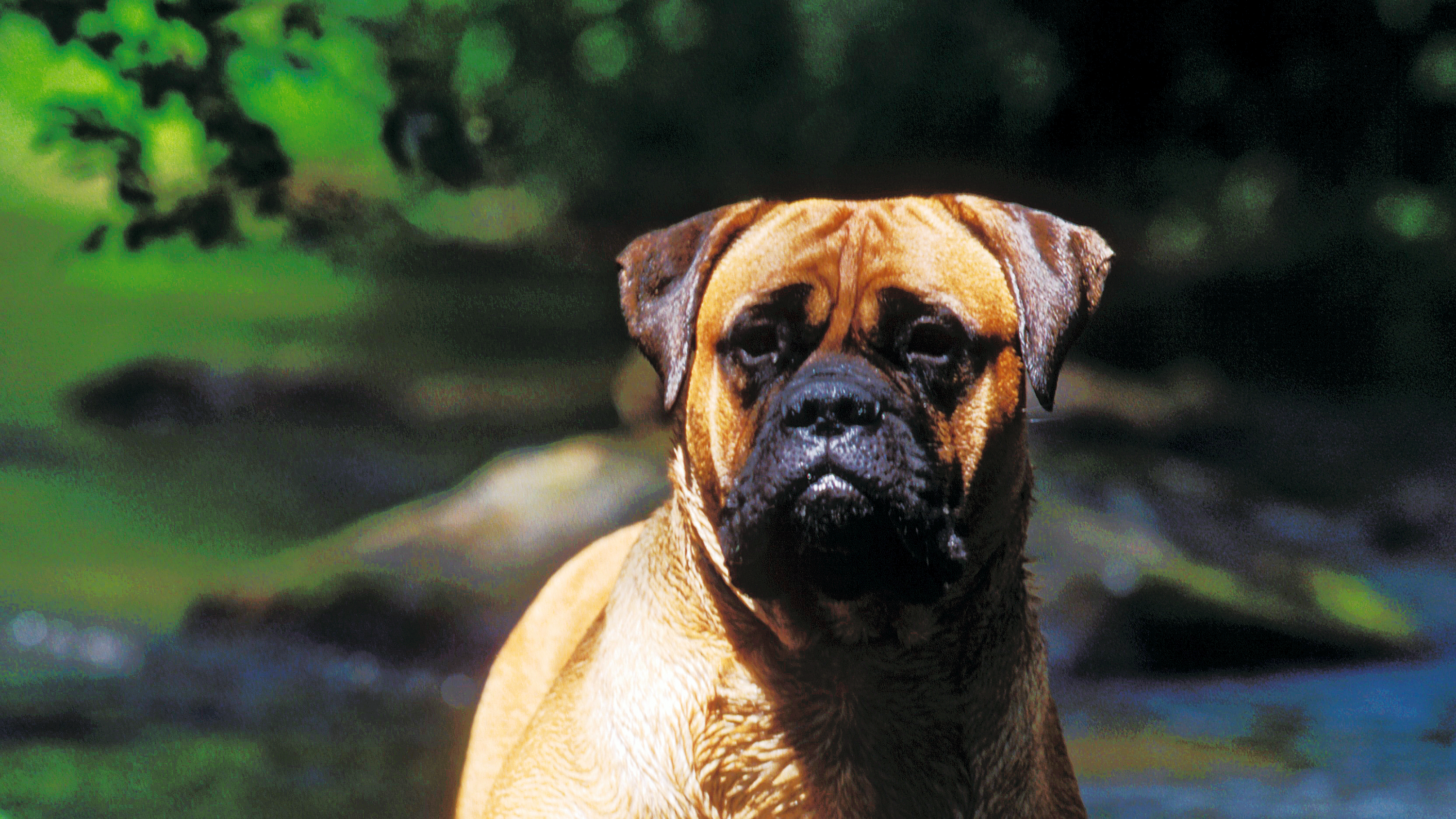
Caring for your Bullmastiff
Grooming, training and exercise tips
7/7
All about Bullmastiffs
The Bullmastiff breed is known for staunch loyalty to their owner and family since they were traditionally used for guarding homes. As a result, this is one breed that does not enjoy being left alone to a great degree, preferring to stay part of the mix.
Out of 19 different mastiff breeds, the very powerful Bullmastiff usually comes in around #5 in terms of strength. The Bullmastiff dog can grow up to 130 pounds (up to 60kg) of incredibly solid muscle mass. Their strength is not to be underestimated: This is a breed for experienced owners only and not suitable for households with small children as he could knock them over.
Suggested Breeds
Read more on this topic
Sources
- Veterinary Centers of America https://vcahospitals.com/;
- Royal Canin Dog Encyclopaedia. Ed 2010 and 2020
- Banfield Pet Hospital https://www.banfield.com/
- Royal Canin BHN Product Book
- American Kennel Club https://www.akc.org/
Like & share this page